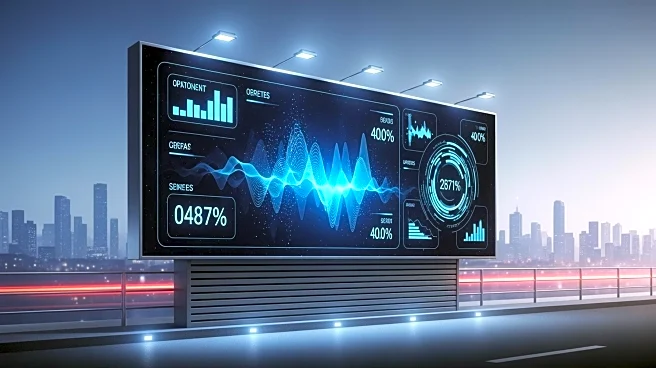What's Happening?
The IAB Media Center is spearheading a transformation in the digital out-of-home (DOOH) advertising sector by implementing new data standards and measurement techniques. This evolution is driven by the integration of advanced technology, which has turned
DOOH into a dynamic and data-driven medium. Historically, DOOH was limited to static billboards, but it has now expanded into a comprehensive ecosystem of connected screens in various public spaces such as transit hubs, retail environments, and EV charging stations. The U.S. market for DOOH has grown significantly, reaching approximately $3 billion, with programmatic DOOH experiencing over 30% year-over-year growth. The IAB's 2025 DOOH Measurement Guide and the Media Rating Council's Out-of-Home Measurement Standards are pivotal in establishing common ground for defining impressions, viewability, and presence, thereby enhancing the credibility of DOOH in omnichannel planning.
Why It's Important?
The advancement in DOOH measurement and data standards is crucial for advertisers seeking measurable, privacy-safe, and contextually relevant ways to reach audiences. By aligning DOOH with digital standards, advertisers can now validate, audit, and accredit every impression, making DOOH a credible component of omnichannel marketing strategies. This shift from estimated exposure to verified attention allows DOOH to compete with other digital channels, such as mobile and social media, in terms of accountability and effectiveness. The integration of DOOH with first-party data transforms it from a broadcast medium to one capable of closed-loop measurement, offering tangible outcomes like store visits or sales lift. As the industry continues to mature, DOOH is expected to become a core part of the advertising mix, providing advertisers with the ability to connect digital intelligence with real-world presence.
What's Next?
The future of DOOH lies in smarter integration within the advertising landscape. As data becomes more interoperable and standards mature, DOOH will increasingly be seen as a core component of omnichannel marketing strategies, rather than an add-on. The challenge for the industry is to leverage the precise location intelligence and real-world exposure capabilities of DOOH to deliver contextually relevant advertising at the right place and time. Programmatic DOOH will continue to play a significant role, enabling advertisers to plan, buy, and measure campaigns with the same efficiency as other digital channels. The focus will be on enhancing accountability and transparency, ensuring that DOOH can stand alongside other digital channels in dashboards and marketing mix models.
Beyond the Headlines
The evolution of DOOH highlights broader implications for the advertising industry, particularly in terms of privacy and data usage. As DOOH integrates more closely with digital standards, advertisers must navigate the ethical considerations of data collection and audience targeting. The ability to measure real-world exposure zones and audience presence raises questions about privacy compliance and the balance between effective advertising and consumer rights. Additionally, the transformation of DOOH into a data-driven medium underscores the importance of technological innovation in reshaping traditional advertising channels, offering new opportunities for creativity and engagement.















